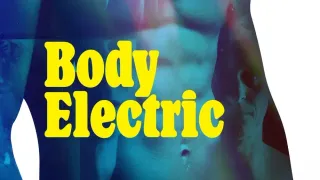
3 hours ago
Connor Franta Opens Up About Troye Sivan Past Relationship, Emphasizes Healing and Growth in “My Good Side”
READ TIME: 3 MIN.
On August 24, 2025, Connor Franta, a prominent LGBTQ+ content creator and author, publicly confirmed his previous romantic relationship with Troye Sivan, the internationally acclaimed singer-songwriter and actor. The revelation came via a candid video titled “my good side,” posted to Franta’s YouTube channel and accompanied by reflective posts on Instagram, marking the first time either party has directly acknowledged their history together.
Franta and Sivan, both openly gay and influential in LGBTQ+ media, rose to fame in the early 2010s through their respective YouTube channels. Their frequent collaborations and close friendship sparked years of speculation among fans, with many “shipping” the duo under the portmanteau “Tronnor.” Despite persistent rumors, neither had confirmed a romantic relationship until Franta’s recent public statements.
In his video, Franta addressed the speculation directly, stating, “I have no bad blood with anyone, especially anyone from that time. I feel like Switzerland, a little angel that somehow has dodged every bullet that seemingly every other YouTuber of that time has been hit with”. He reflected on the vulnerability of that era and the unique challenges faced by LGBTQ+ creators navigating fame and identity in a rapidly evolving digital space.
Franta’s message emphasized the value of forgiveness, compassion, and mutual respect. He spoke candidly about the emotional complexity of his relationship with Sivan, referencing Sivan’s 2018 song “The Good Side” as both a reflection and a misrepresentation of their shared experience. “I think he got the good side of things emotionally, but I think in many ways a song like that neglects the idea that people are individuals and everyone chooses their own path in life. The good side of life is completely subjective,” Franta explained.
The announcement sparked widespread reactions across social media platforms, with longtime fans expressing nostalgia, joy, and gratitude for the transparency and maturity displayed by both Franta and Sivan. Many celebrated the moment as a healing chapter for the duo and for the broader LGBTQ+ community, which has watched their careers and personal growth unfold over more than a decade.
Franta’s Instagram posts, including evocative images captioned “my good side,” further reinforced his message of positivity and self-acceptance. The posts have been widely shared, with users highlighting the importance of authentic representation and open dialogue about LGBTQ+ relationships in the public eye.
Both Franta and Sivan have played significant roles in advancing LGBTQ+ visibility and advocacy through their creative work. Franta, who came out publicly in 2014 via a YouTube video that has since garnered over 12 million views, has been praised for his openness about mental health, identity, and personal growth. Sivan, meanwhile, has leveraged his platform as a musician and actor to address LGBTQ+ themes in his art, including songs like “Wild,” “Bloom,” and “The Good Side,” which explore the nuances of queer relationships and heartbreak.
Their decision to publicly address their relationship—despite years of speculation—marks a significant moment for LGBTQ+ representation. By sharing their truth with vulnerability and grace, Franta and Sivan offer a model for healthy communication, reconciliation, and the pursuit of happiness on one’s own terms.
In the closing moments of his video, Franta delivered a message intended “for you & him,” encouraging viewers to embrace their own journeys and find contentment in their personal “good side.” He stressed that happiness is not a fixed destination but a subjective state, shaped by individual choices and experiences.
The affirmation resonates deeply with LGBTQ+ audiences, many of whom have witnessed Franta and Sivan’s evolution from closeted teens navigating early internet fame to openly queer adults forging their own paths. Their story stands as a testament to the resilience, complexity, and beauty of LGBTQ+ love and friendship.
As Franta and Sivan move forward with their respective careers, their openness about past relationships and present well-being offers hope and encouragement to LGBTQ+ individuals everywhere. Their willingness to reflect, heal, and grow—both separately and together—underscores the importance of authenticity and kindness, values that remain central to the LGBTQ+ movement.
For fans and newcomers alike, the “Tronnor” story is no longer just a ship or a rumor, but a chapter closed with respect and gratitude. As both creators continue to inspire, their message is clear: everyone deserves to find and celebrate their own “good side.”






